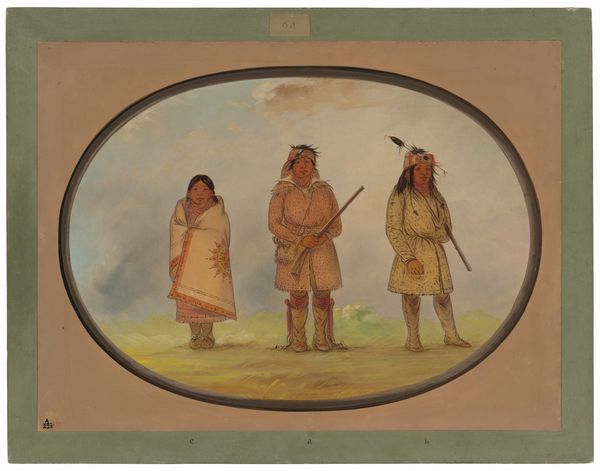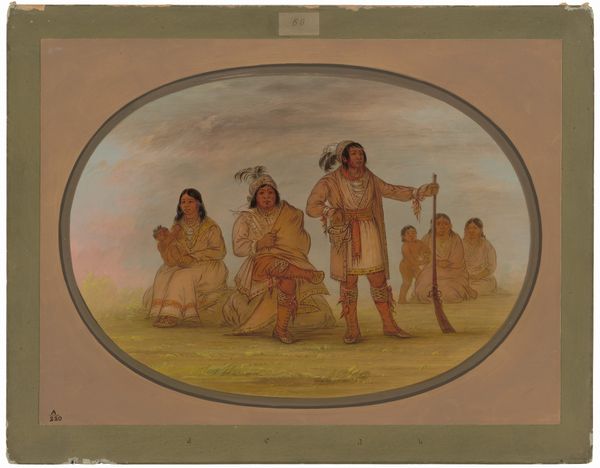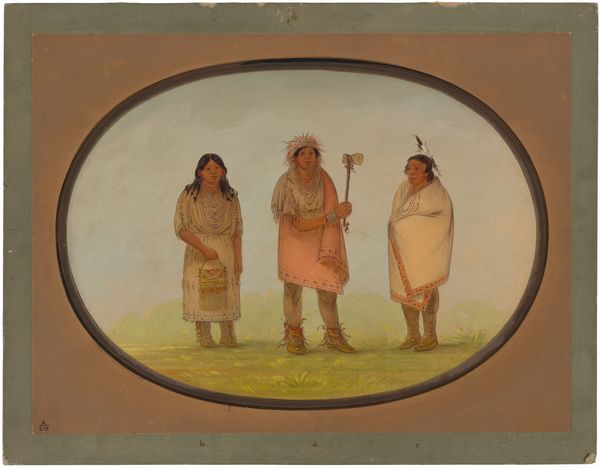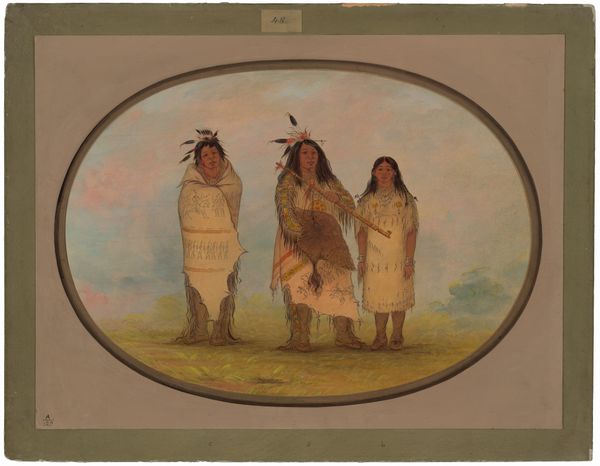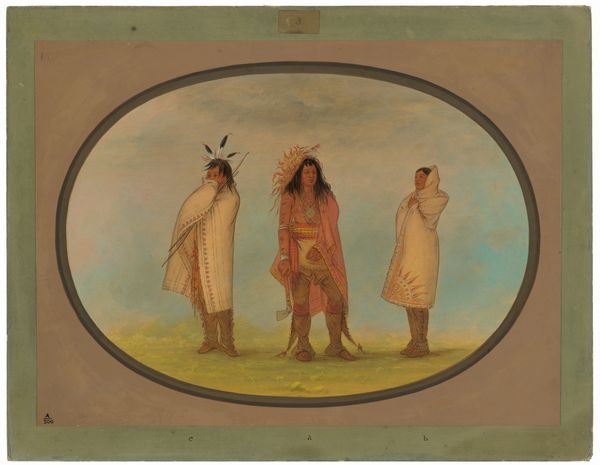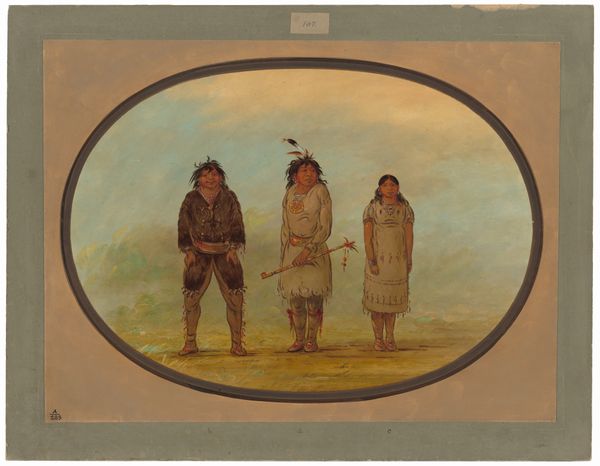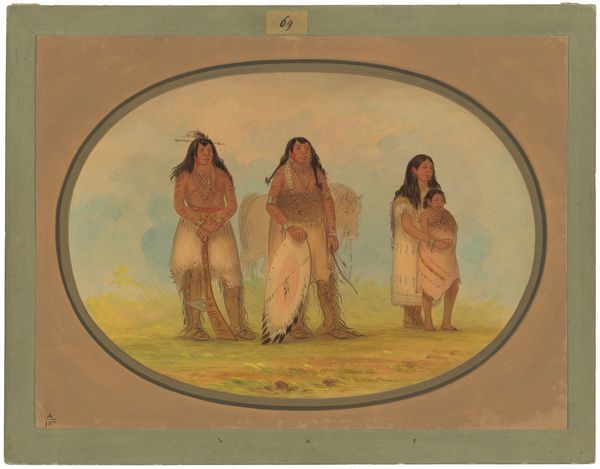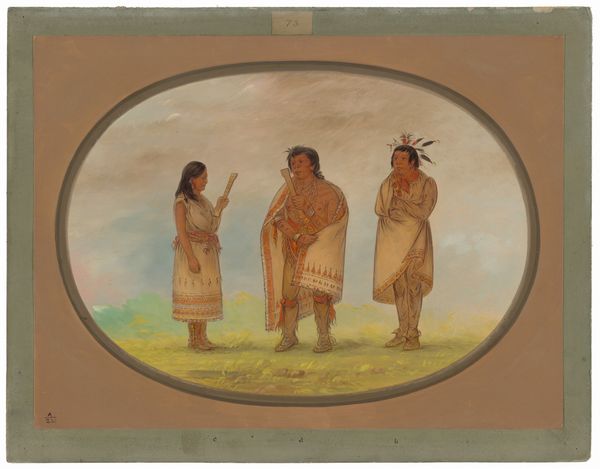
gouache, watercolor
#
portrait
#
water colours
#
gouache
#
watercolor
#
group-portraits
#
watercolour illustration
#
watercolor
Dimensions: overall: 47.4 x 63.9 cm (18 11/16 x 25 3/16 in.)
Copyright: National Gallery of Art: CC0 1.0
Editor: This is "Three Peoria Indians" by George Catlin, painted between 1861 and 1869. It's a watercolor painting. It's interesting how Catlin chose watercolor, such a seemingly delicate medium, to depict these figures. What are your thoughts on the choice of materials in this context? Curator: Well, consider the economic realities of the time. Watercolor was far more accessible and portable than oils, essential for an artist documenting Indigenous peoples in the American West. Catlin's process here is key; the relative affordability allowed him to create a large body of work, though perhaps at the expense of the permanence and grandeur often associated with "high art." How might the means of production influence our understanding of the subject matter itself? Editor: That's a good point. The accessibility of watercolor enabled Catlin to document a larger number of individuals and communities, providing a more comprehensive record. But does the choice of a less "esteemed" material unintentionally contribute to a perception of the subjects as somehow less significant? Curator: Exactly! We must confront the inherent power dynamics in artistic production. Were the subjects involved in the process beyond just being models? Did they have any agency in the selection and use of materials? Or were they simply objects to be depicted by Catlin, furthering a narrative of colonial control and consumption of the American landscape and its inhabitants? The rifle and tomahawk are not just props here, but also commodities that reflect both Indigenous technologies and colonial trade. Editor: That's fascinating; it really changes how I see the piece. It's less about the romanticism of the image and more about the socio-economic context in which it was produced. Curator: Precisely. Examining the materiality opens up questions about labor, cultural exchange, and the artist's role in shaping historical narratives. Hopefully, this refocuses our view and reveals hidden economic relationships.
Comments
No comments
Be the first to comment and join the conversation on the ultimate creative platform.
